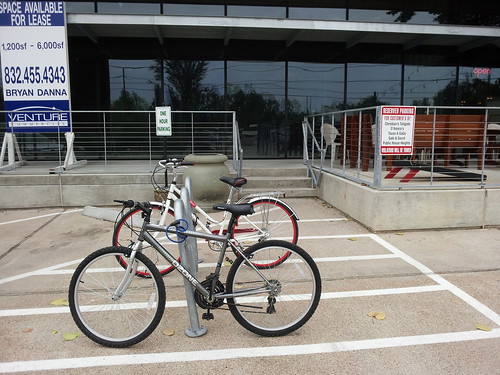I believe the new offstreet parking requirements that have been proposed and are being debated are at least as big a deal as the Chapter 42 revisions. We really need to get this right.
Under the new rules, some eateries – dessert shops, carryout restaurants – would need less parking, but requirements on most restaurants would go from eight spaces per 1,000 square feet of floor area to 10, with most bars going from 10 spaces to 14.
The revisions also would allow neighborhoods to create special parking areas tailored to their needs, reduce parking requirements for historic buildings, allow the substitution of bike parking for car spaces, loosen rules on how close lots must be to a building’s front door and make it easier for businesses to share parking.
As Houston seeks greater density in other initiatives, Councilman Ed Gonzalez said, the city must ensure the best use of its land.
“We’re still going with the basis that we’re going to be a car-dependent community going forward,” Gonzalez said. “What about the pedestrian? How can we better align transit to meet the needs of certain neighborhoods? We should be creating conditions to create more small businesses and more jobs, not more parking lots.”
That is an argument Bobby Heugel, the force behind several nationally acclaimed Houston restaurants and bars, has been making since 2011. He helped form OKRA, an Organized Kollaboration on Restaurant Affairs, to advocate for the next wave of independent restaurateurs, who he says would be barred from the market by the proposed parking changes.
[…]
The city proposes exempting freestanding restaurants and bars smaller than 2,000 square feet from the higher parking requirements; OKRA wants the threshold set at 4,500 square feet, regardless of whether a business is freestanding. City officials say they are willing to reconsider both points.
“The only opponents we have are city officials who incorrectly interpret residential concerns,” Heugel said.
As I said before, I have some sympathy for neighborhood residents who are tired of dealing with packed streets full of overflow parkers from nearby eateries and drinkeries, but any solution that requires more paved-over spaces or that discourages future innovation and growth in Houston’s dynamic food scene is a non-starter. The problem is that there’s been a lot of growth in many established inner core neighborhoods, with a lot more residents crowded onto the original plats and new businesses moving in to formerly abandoned spaces, but without a corresponding amount of growth in transit infrastructure. The influx of people and businesses is great and desperately needed, but the huge increase in vehicular traffic and demand for parking in places that were never built to handle it isn’t. As with other places that are dealing with more traffic than they can bear, providing viable non-car alternatives has to be a key component of the solution. Allowing food and drink establishments to trade bike parking for car parking is good, but the ultimate answer is bigger than anything the bars and restaurants themselves can do. Still, we need to remember that a lot of these new places, and a lot of the planned new places, are intended to be part of the neighborhood, and for the neighborhood. Their customer bases for the most part don’t need to drive and park to get there. The off-street parking regulations need to allow them to fulfill that vision. If we’re treating a neighborhood coffee house the same way as a franchise restaurant that fronts a highway, we’re doing it wrong.

